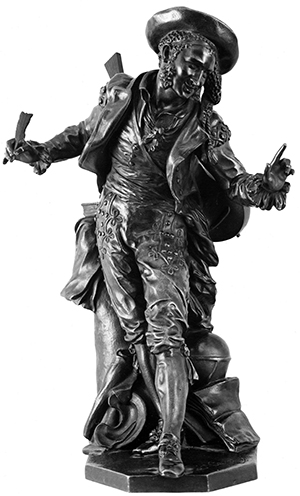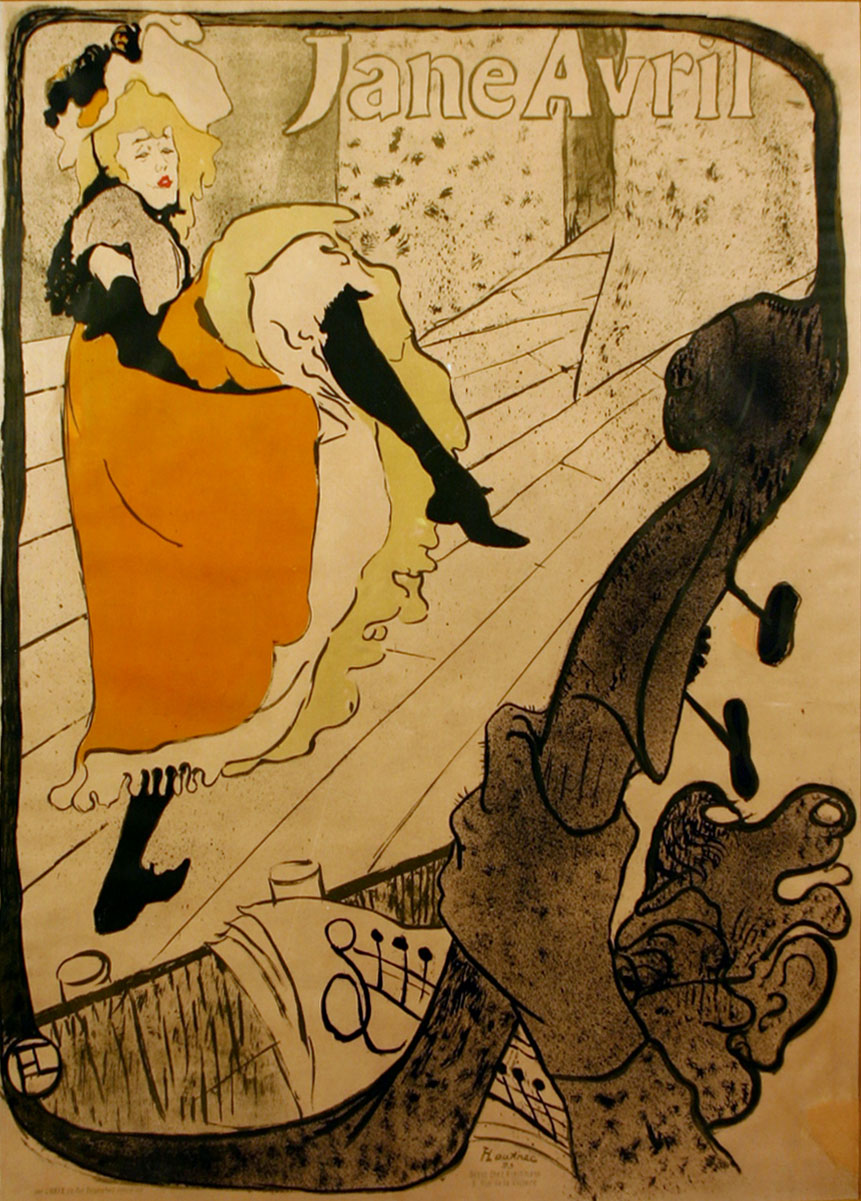Art Across Curriculum Podcast
A podcast for kids!
Enjoy this limited-series podcast featuring artworks from our Focus on the Visual Arts and Water Across the Curriculum offerings, made possible through the generous support of Art Bridges and its Bridge Ahead Initiative. Listen to one, two, or the entire series!
Each episode features the vocal talents of a student from the Marquette University Theatre Arts program.
Once you’re done, we would greatly appreciate your feedback on this short, three question survey here.
Episode 5: Jean-Baptiste Carpeaux
This artwork is featured in the What is Art? chapter of Focus on the Visual Arts, also known as FoVA. Learn more about FoVA on our K-12 Educators webpage

Jean-Baptiste Carpeaux (French, 1827 – 1875), Figaro, ca. 1873. Bronze, 22 in (55.9 cm). Gift of Catherine and David A. Straz, Jr. in Honor of Dr. Curtis L. Carter, Collection of the Haggerty Museum of Art, Marquette University, 96.3
Episode notes:
Expand all | Collapse all
Barber of Seville and Figaro
Episode 4: Utagawa Hiroshige
This artwork is featured in the Water Cycle chapter of Water Across the Curriculum, also known as WAC. Learn more about WAC on our K-12 Educators webpage

Utagawa Hiroshige (Japanese, 1797 – 1858), Driving Rain at Shuno (no. 46) from Fifty Three Stations of the Tokaido Road. Woodblock print, 9 5/8 x 15 in (24.4 x 38.1 cm). Gift of Mr. Samuel Gansheroff, Collection of the Haggerty Museum of Art, Marquette University, 83.14.9.
Episode notes:
Expand all | Collapse all
53 Stations of the Tokaido Road
Episode 3: Henri de Toulouse-Lautrec
This artwork is featured in the Where does Art Belong? chapter of Focus on the Visual Arts, also known as FoVA. Learn more about FoVA on our K-12 Educators webpage

Henri de Toulouse-Lautrec (French, 1864 – 1901), Jane Avril, 1895. Lithograph, 48 1/8 x 34 ¼ in (122.24 x 86.99 cm). Gift of Sandra and Sheldon Ausman, Collection of the Haggerty Museum of Art, Marquette University, 96.21.5.
Episode Notes:
Expand all | Collapse all
Henri de Toulouse-Lautrec
Episode 2: Alexis Rockman
This artwork is featured in the Water Cycle chapter of Water Across the Curriculum, also known as WAC. Learn more about WAC on our K-12 Educators webpage.

Alexis Rockman (American, b. 1962), Kapok Tree, 1995. Oil on panel, 96 x 63 3/4 in. Gift of Peter Norton, Collection of the Haggerty Museum of Art, Marquette University, 2001.13.7.
Episode Notes:
Expand all | Collapse all
Start by requesting free postcards of the artwork for your students by emailing Art Across Curriculum Educator Kay Antonelli: kay.antonelli@marquette.edu.
0:00 – 0:50
-
It is especially meaningful for students to develop context for the painting Kapok Tree, and the podcast begins with sensory descriptions of oppressive heat, lurking jaguars, red howler monkeys, and rhythmic howling!
-
This is a perfect opportunity for the students to stop and illustrate the images that have risen from this rich description. Colored pencils, crayons, or oil pastels are perfect materials to bring these images to life!
0:51 – 2:55
- Students can develop an even greater understanding for Rockman’s art through the use of the Art in Context Timeline in the Water Across the Curriculum Educator Resource Guide on page 22. How many continents did Rockman explore to observe, study, and draw?
-
3:00 – 4:00
-
Frogs, Frogs, and more frogs! Compare and contrast the painted image from the website or the available post cards to the contour line drawing from The Haggerty Museum of Art Activity Bookon page 10.
-
Have students look for patterns in the two images. Once students have located patterns on their own post card, have them share their findings with the class on the larger digital image.
4:00 – 14:30
- It is especially meaningful for students to be exposed to primary sources. In this podcast, the students will hear the actual words of the artist and context for the artwork that he creates. As a result, there are several, diverse topics that can be focused on relative to Rockman’s first person narrative.
For example:
- Have students begin by partnering up for a “Pair and Share
- What do you think about when you look at Kapok Tree?
- What does Rockman say about how humans have impacted the earth?
- What are some things in Milwaukee that we can do to lessen human impact on Lake Michigan?
14:40 – 17:54
- Review parts of the water cycle such as: precipitation, evaporation, condensation, run off or ground water.
- How do we see evidence of the water cycle in the rain forest?
- How does the water cycle affect the plants and animals that live in the rain forest?
- Compare the annual rainfall in the rain forest to Milwaukee, Wisconsin.
After listening to the episode visit the links below. There are many ways you can continue the learning with your students once the podcast is done!
This podcast aligns to the Wisconsin Department of Instruction Standards for Art and Design.
Episode 1: Albrecht Durer
This artwork is featured in the How has Art Changed Throughout Time? chapter of Focus on the Visual Arts, also known as FoVA. Learn more about FoVA on our K-12 Educators webpage.

Albrecht Durer (German, 1471 – 1528), Assumption and Coronation of Virgin (from Life of the Virgin), 1510. Woodcut, 11 1/2 x 8 1/8 in. Gift of Mrs. Otto H. Falk, Collection of the Haggerty Museum of Art, Marquette University, 56.10.
Episode notes:
Expand all | Collapse all
Start by requesting free postcards of the artwork for your students by emailing Art Across Curriculum Educator Kay Antonelli: kay.antonelli@marquette.edu.
Pause at 5:25 to show students the painting by Pieter Bruegel the Elder made in 1560 called Children’s Games. Discuss what you see with your students. How are games from the 15th century similar or different to today?
Discuss the question asked at 7:04 with your students. "What about clothing and things for your home, such as furniture or pots and pans? Where did people get these things?"
Pause after the fun fact at 15:08 to watch the 2:54 minute video tour of Durer's home created by DW News: Visiting Albrecht Dürer’s house video. Pause at 19:10 to discuss your student's favorite books and help your students make a personal connect to the printing press!
There are many ways you can continue the learning with your students once the podcast is done!
This podcast aligns to the Wisconsin Department of Instruction Standards for Art and Design.
Life in the ~16th century
Durer’s life, family and artwork







